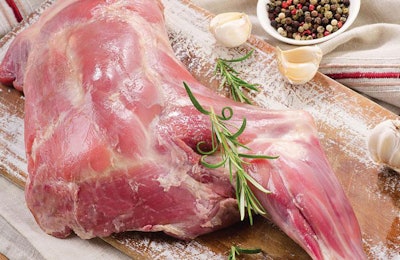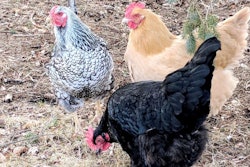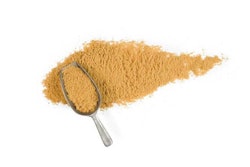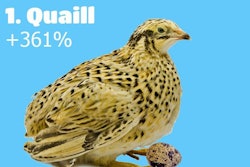
Lamb meal has been a staple for the “alt” brands for decades. It was the “original” exotic ingredient and the first novel protein used in elimination diets before “limited ingredient diets” became known as such. However, it has now begun to slide in popularity, perhaps suffering from too many years of popularity and its ubiquitous use to the point of becoming common place. Figures from GfK and WATT’s Product Ingredient database both indicate that formulas with the term lamb (including both lamb and lamb meal) are softening. Whether this is a function of waning interest, a commoditized status or whether it has simply been surpassed by more exotic ingredients is not clear, but lamb as the “go-to” protein meal for all things alternative has waned. It may not be the new “darling” of the ingredients, but it is still a prominent ingredient. For that reason, it merits additional review since the last time it was addressed in 2004 in this column.
Lamb meal is produced from lamb bones and offal resulting from the production of lamb meat for human consumption. The meat-trimmed bones are rendered by both conventional and low-temperature means. Most of the lamb used worldwide is derived from Australia and New Zealand. This presents both opportunities and challenges. The shift since the discovery of and the barriers created to BSE resulted in a near monopoly for lamb meal from these two countries due to their TSE (tissue spongiform encephalopathy) free status. Given they are both islands, the isolation of the ovine production creates a natural barrier and long-term safety and product security for this ingredient. However, these countries are quite remote to the leading markets creating a transportation challenge to the customers in the Northern Hemisphere, and there is a strong seasonality to the supply, which creates an annual surplus-shortage cycle. Because of these factors, the time from harvest to use can be extensive (9 to 12 months), and it can be exposed to very high temperatures during shipping, which can create challenges with oxidative stability. Especially given most all of it is naturally preserved.
Origin and quality of lamb meal
In the world of lamb meal not much new has come on the scene in recent years. In the past, due to its popularity and limited supply, there were concerns over the integrity of the material. Lamb meal shortages led to some practices of creating “analogs.” That’s code for other protein meal with more favorable supply positions finding its way into lamb meal to extend availability. However, in recent times, the supply has become more plentiful or at least matched demand and price, so this doesn’t appear to be an issue in the current era. Plus, with the advent of PCR analysis, the integrity of the origin material is much easier to confirm.
On the quality front, lamb meal continues to be fraught with an ash and connective tissue challenge, not unlike beef and pork meal supplies. This is due in part to the efficiency at which meat processors are able to remove soft materials (meat and fat) from the long bones. So lamb going into rendering is high in ash (approximately 25 percent) from bone and low in soft materials (e.g., protein, 55 to 60 percent, and fat, approximately 15 percent), and the protein is high in connective tissue. The latter tends to dilute the essential amino acids as a proportion of the total and reduce the overall protein quality. This is especially problematic for sulfur amino acids like cysteine and methionine. The limited digestibility of these amino acids also complicates their nutritional value. Add these limiting factors of lamb meal to a diet low in protein and fat with a high concentration of fibrous cereal brans and it may lead to nutritional issues. Such as those reported to have been a part of dilated cardiomyopathy in susceptible breeds of dogs (Torres et al. 2003). No additional reports of this issue have occurred in the last few years, which may be the result of the trend toward higher protein diets and more attention given to assuring bioavailable levels of these amino acids occur in dog diets.
Work still needs to be published regarding variability inherent in lamb meal composition/quality and how oxidation and storage affect its utility for pets. Further, sensory analysis would help understand how and where it best fits in pet diets. Despite the need for additional depth in our understanding, it can be assumed lamb meal is safe and effective for use in pet foods. It has been a good fit for many years and will continue to be a good option when pet owners are looking for protein options in their dog’s or cat’s diet.
Lamb meal is here to stay
Lamb meal appears to be a common ingredient in pet food today, having outlived its status as a novel ingredient for elimination diets. As it has become more mainstream, its use has evolved from the “star” sole source in a food to a more support role paired with other proteins. Especially in some of the positioning as a “red meat” and/or “pastoral” style formula where it is a complement to other meat and bone meal style proteins like those from beef, venison, or fish.
That lamb meal is here to stay is pretty evident. The quality and consistency seem to have stabilized and the supply stream to have been worked out to a steady state. While it has given way to more exotic protein meals in the dermatitis, elimination diet, and novel protein categories, as a mainstream ingredient there are very few controversies and it seems to be a consistent part of our ingredient tool box.


















